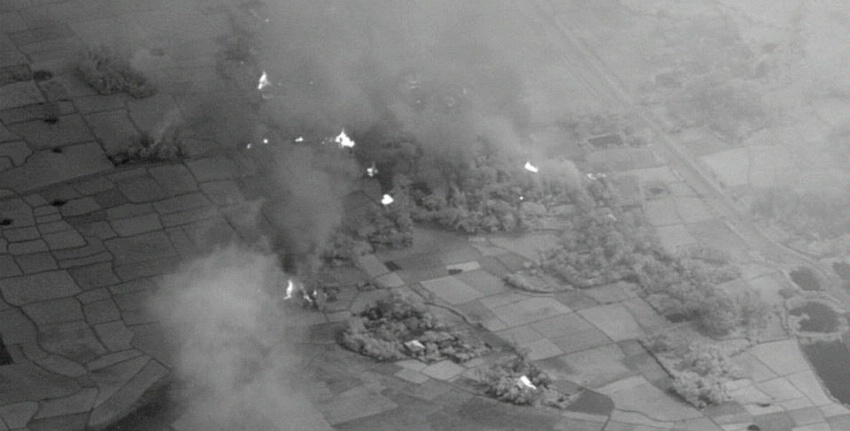The vast majority of Rohingya refugees who arrived in Bangladesh since Myanmar’s clearance operations in northern Rakhine State began in Oct. 2016 witnessed killing, village destruction, injuries, or sexual violence, according to a new report produced by the US State Department.
The report is based on a survey of 1,024 Rohingya refugees, which asked them what they personally witnessed, excluding hearsay. The results show that 82 percent of refugees witnessed killing, including 75 percent who identified the killers as Myanmar soldiers. The others identified police, unidentified security forces, and armed civilians as killers.
One-fifth of respondents witnessed a mass-casualty event, defined as the killing or injuring of more than 100 people at once, such as in the deliberate burning of a structure with people inside or the sinking of a boat full of people fleeing violence.
Forty-five percent of refugees witnessed a rape, nearly all of whom identified Myanmar soldiers or police as the perpetrators. Eighteen percent of refugees witnessed a gang rape committed by Myanmar soldiers or police.

“The survey reveals that the recent violence in northern Rakhine State was extreme, large-scale, widespread, and seemingly geared toward both terrorizing the population and driving out the Rohingya residents,” the report says. “The scope and scale of the military’s operations indicate they were well-planned and coordinated.”
Aside from the statistics, the State Department report also includes harrowingly detailed testimony from witnesses to atrocities. One man who was surveyed recounted seeing four girls tied up with ropes, heavily bleeding, and “half dead” as he walked in a forest new a military outpost. The girls told him that the military had kept them there and raped them for three days.
Unlike a UN report released last month, the State Department report stops short of accusing Myanmar military leaders of genocide against the Rohingya, thereby sparing the US government from its legal obligation to intervene. However, the findings of the report could be used to justify other punitive measures against Myanmar or its military, including the sanctions.

Last month, the US government announced sanctions against four military and police commanders and two army units. Senior General Min Aung Hlaing, Myanmar’s military chief, was not sanctioned. Yesterday, he defended the military’s actions in an interview with a military-run newspaper, saying “countries set different standards and norms” and outsiders have “no right to interfere”.
In addition to releasing its report, the US government announced yesterday that it would nearly double its aid for displaced Rohingya Muslims in Bangladesh and Myanmar, adding US$185 million to its budget.





Reader Interactions